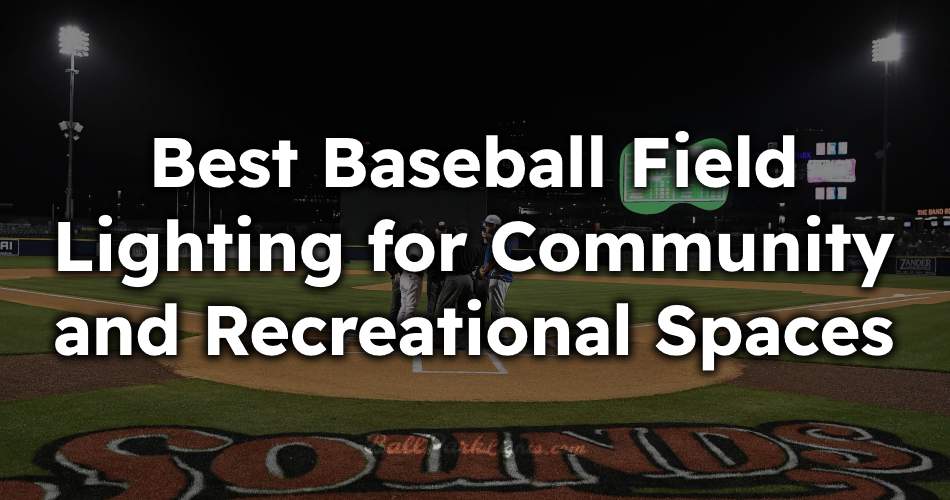Baseball is a sport that requires precision, skill, and focus, and the right lighting can enhance the experience, ensuring players and spectators enjoy the game to the fullest. For recreational and community baseball fields, selecting appropriate lighting involves several factors, from the size of the field to the type of lighting technology used. Proper lighting not only enhances visibility but also improves safety, helping prevent accidents and ensuring a smooth game. This guide explores the best baseball field lighting solutions for community spaces and offers insight into how to select the ideal lighting system for your field.
| Products | Descriptions |
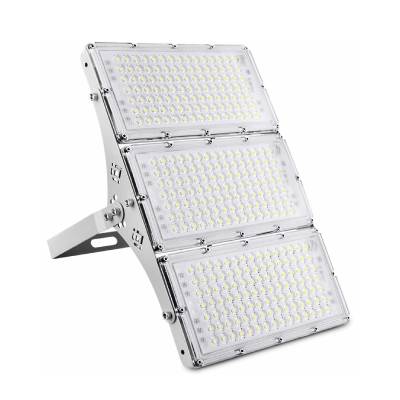 |
The Daylight Waterproof LED Floodlight is a powerful and energy-efficient lighting solution designed specifically for recreational baseball fields. It provides bright and even illumination, ensuring clear visibility for both players and spectators during evening games. Its durable, weatherproof construction makes it ideal for outdoor use, standing up to rain and harsh conditions. With a wide beam angle, it effectively covers the field, reducing shadows and enhancing safety. This LED floodlight helps keep operating costs low while delivering reliable performance for recreational sports settings. |
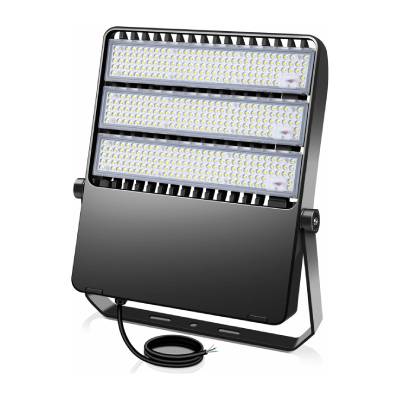 |
The outdoor stadium light features ultra-bright LED technology, providing exceptional illumination for community baseball fields and large outdoor areas. With a wide beam angle for efficient lighting, this energy-saving design significantly reduces power consumption, resulting in substantial cost savings. Its durable, waterproof construction ensures reliable performance in all weather conditions. Easy to install with an adjustable bracket, this versatile floodlight is perfect for various outdoor applications, making it an excellent choice for community spaces that require dependable lighting solutions. |
Table of Contents
TogglePrinciples of Lighting Design for Recreational Baseball Facilities
Field Size and Layout
Understanding the size and layout of the field is key when determining the type of lighting required. Different leagues and field setups have unique requirements, and this affects the amount of light necessary for good visibility. For instance, smaller fields used for youth leagues may not require as much light as larger fields intended for adult leagues or competitive play.
A recreational baseball field typically has dimensions based on local league standards, which might differ from professional-level fields. Small to medium-sized fields often require fewer lighting poles and lower wattage fixtures, while larger fields might need higher-wattage systems and more evenly distributed poles to cover the playing surface uniformly. Understanding these dimensions can help you plan the lighting design more effectively and ensure the entire field is well-lit, without leaving any dark spots that can impact the game.
Lighting Intensity and Coverage
| Field Area | Recommended Lux Level | Purpose |
|---|---|---|
| Infield | 500 – 750 lux | Ensures clear visibility for players during fast-paced plays. Critical for tracking the ball and ensuring player safety. |
| Pitcher’s Mound/Home Plate | 750+ lux | Provides enhanced visibility for pitching and batting, reducing glare and improving safety. |
| Outfield | 300 – 500 lux | Sufficient lighting for tracking fly balls and long throws with more reaction time. |
| Dugouts/Benches | 200 – 300 lux | Provides visibility for players and coaches to see clearly without unnecessary brightness. |
| Spectator Areas | 150 – 300 lux | Comfortable lighting for the audience, allowing them to follow the game without distraction. |
The intensity and coverage of lighting on a baseball field are determined by how evenly light is distributed across the entire playing area. Measured in lux, which indicates the amount of light falling on a surface, the brightness of the lighting is a crucial factor for both players and spectators. Ensuring uniform light distribution is key to preventing dark areas or overly bright spots, which can disrupt players’ performance and reduce the overall quality of the game.
Different areas of the field require varied lighting intensities. The infield, where most of the action takes place, typically requires higher lux levels to ensure clear visibility for players. Recommended lighting for the infield usually falls between 500 to 750 lux, allowing players to see the ball and each other clearly during high-speed plays. Key areas like the pitcher’s mound and home plate need even more focused illumination to enhance player safety and visibility. In these critical areas, lighting should be both intense and evenly spread, often exceeding 750 lux to ensure proper visibility for both the pitcher and batter.
The outfield, on the other hand, generally requires lower lux levels compared to the infield. Since fewer plays happen in the outfield and players have more time to react, a lux level of around 300 to 500 is often sufficient. This balance ensures that the entire field is illuminated effectively without overwhelming players or creating visual discomfort for spectators.
To further optimize the playing experience, it’s crucial to minimize glare, which can distract or strain the eyes, particularly in high-intensity night games. Modern lighting systems with glare-reducing technology help improve visual comfort, ensuring players can track the ball without visual interference, while also providing a better viewing experience for the audience. This combination of appropriate lux levels and advanced lighting technology ensures the best conditions for recreational baseball fields.
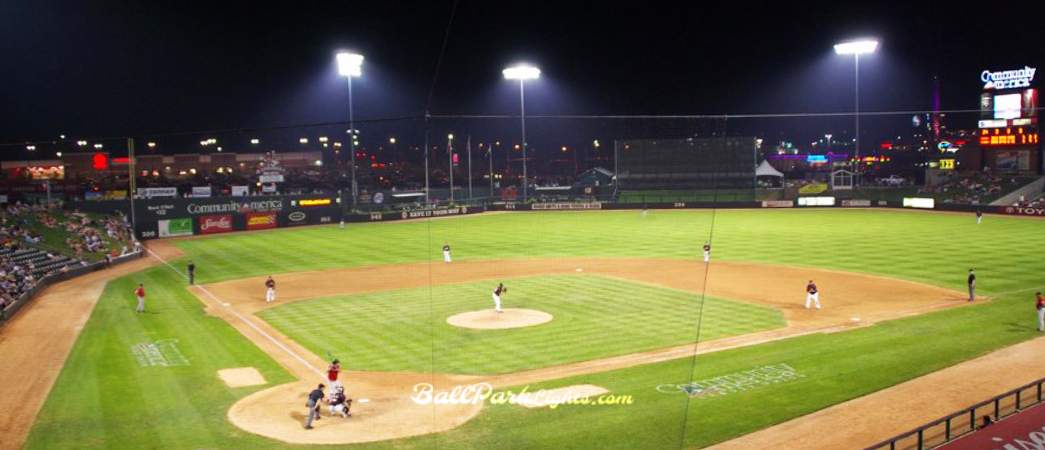
Energy Efficiency
When choosing lighting for a baseball field, energy efficiency is a crucial factor, as it influences both operational costs and the environmental impact. LEDs have become the top choice for community and recreational fields due to their lower energy consumption compared to traditional lighting systems such as metal halide or halogen fixtures.
LED lights offer several advantages, including longer lifespan and reduced maintenance needs. This can result in significant savings over time, especially for community fields with limited budgets. LED technology also provides better control over light distribution, allowing for more precise coverage and less light spill outside the field. This helps ensure that light is focused where it’s needed most—on the playing area—rather than illuminating surrounding areas unnecessarily.
Another advantage of LED lights is that they can be dimmed or adjusted depending on the needs of the game or practice session. This flexibility means you can reduce energy use during practices or lower-intensity games, further cutting costs while maintaining a high-quality lighting environment.
Durability and Weather Resistance
Since baseball fields are outdoor spaces, the lighting system must be durable enough to withstand various weather conditions. Lights exposed to rain, wind, snow, and other environmental factors need to be weather-resistant and robust to ensure they last for years without requiring frequent repairs or replacements.
Choosing lighting fixtures with high ratings for weather resistance can save money in the long run. Many LED lighting systems are designed to handle extreme weather, from freezing temperatures to intense heat. Corrosion-resistant materials are also key, as they prevent rusting or degradation over time, which is particularly important in areas with high humidity or coastal environments where salt in the air can be damaging.
Durability also extends to the fixture’s ability to handle wear and tear from daily use, such as frequent switching on and off. The right lighting system should be low-maintenance and reliable, so it doesn’t disrupt games or require excessive repairs that could strain community budgets.
Budget and Installation
Cost is always a consideration when choosing lighting for a recreational baseball field. While the initial investment for a quality lighting system may seem high, it’s important to consider the long-term savings in energy consumption, maintenance, and longevity. LED lights, though often more expensive upfront than metal halide or halogen systems, pay off in terms of lower electricity bills and fewer replacements over time.
Installation costs can also vary depending on the complexity of the system and whether you opt for professional installation or a DIY approach. Hiring professionals ensures the lights are installed correctly and meet safety standards, while a DIY installation might save money upfront but could lead to complications if not done properly. The complexity of wiring, pole placement, and fixture alignment can make professional installation the better option for many fields, ensuring that the lighting system works optimally from day one.
How to Select Baseball Field Lights for Recreational Use
Selecting the right baseball field lights for recreational use involves evaluating several aspects to ensure the lighting system suits the specific needs of your community field. A well-chosen system balances performance, cost, and ease of maintenance, creating a functional and enjoyable environment for players and spectators alike.
Evaluate the Field’s Size and Use
One of the first things to consider when selecting lights is the field’s size and how it will be used. A smaller field for youth leagues or casual games requires less intense lighting than a larger field for adult recreational leagues or tournaments. Infield lighting should be brighter, as it is where most of the action takes place, while the outfield can use slightly lower levels of brightness.
If your field serves multiple sports or activities, consider lighting systems that can be adjusted to suit different events. Some systems offer customizable settings that allow you to dim or brighten the lights depending on the sport or number of participants. This flexibility can be a valuable feature for community fields that host a variety of activities.
Assess Lighting Technology Options
LED lighting is generally the best choice for modern recreational baseball fields. Compared to traditional options like metal halide or halogen lights, LEDs offer greater energy efficiency, longer lifespan, and improved light control. The upfront cost of LED systems may be higher, but their low maintenance requirements and energy savings make them cost-effective in the long run.
Solar-powered lighting systems are another option, particularly for fields in areas with abundant sunlight. These systems are eco-friendly and can reduce electricity costs. However, they may not provide the same level of brightness or reliability as grid-powered LED systems, particularly in regions with less consistent sunlight. When considering solar lights, it’s important to evaluate their ability to meet the field’s lighting needs during evening games or overcast weather conditions.
Ensure Even Light Distribution
Uniformity of light distribution is another key factor. Uneven lighting can cause shadows, bright spots, or dim areas on the field, which can affect gameplay and safety. Look for lighting systems that are designed to distribute light evenly across the entire playing surface, with particular attention to key areas like the pitcher’s mound, home plate, and infield.
Modern LED lighting systems often come with advanced optics that help focus light where it’s needed most, minimizing light spill and reducing energy waste. This also ensures that surrounding areas, such as spectator stands or adjacent properties, aren’t affected by stray light, which can be an issue with older lighting technologies.
Consider Long-Term Maintenance
Maintenance is a significant factor in the overall cost of a lighting system. While traditional lighting systems like metal halide may require more frequent bulb replacements and repairs, LED systems are known for their long lifespan and low maintenance needs. Most LED lights can last upwards of 50,000 hours, which means they can function for several years before requiring replacement.
When selecting a lighting system, it’s worth considering the ease of maintenance and availability of replacement parts. Choosing a system from a reputable brand with strong customer support can make maintenance easier over the long term. It’s also a good idea to ensure that the lighting poles and fixtures are accessible for routine maintenance and cleaning, which can help extend the life of the system.
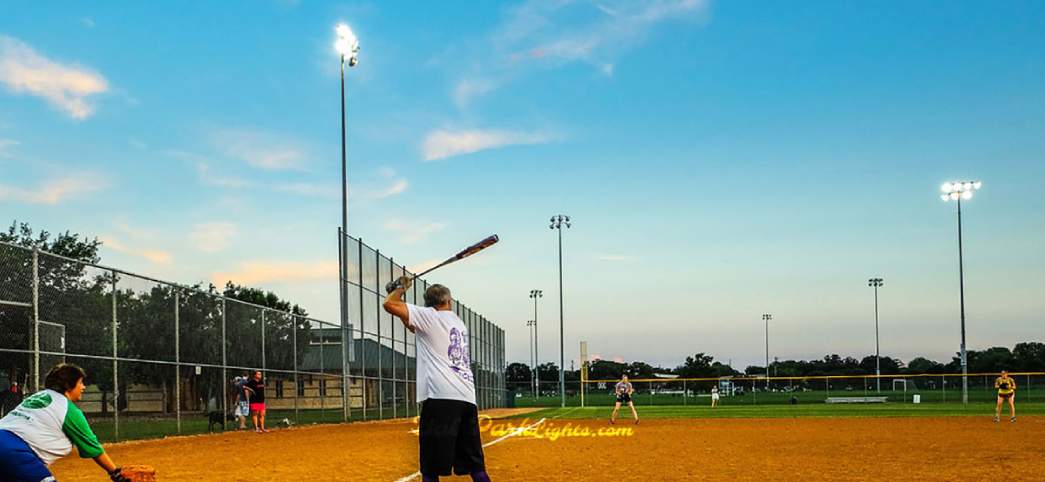
Best Types of Lighting for Recreational Baseball Fields
Different types of lighting systems are available for recreational baseball fields, each with its benefits and drawbacks. The best choice depends on factors like budget, energy efficiency, and the specific needs of the field.
LED Lighting
LED lighting is widely considered the best option for recreational baseball fields due to its energy efficiency, long lifespan, and superior performance. LED lights consume significantly less energy than traditional lighting systems, helping to lower electricity costs for community fields with limited budgets. They also have a longer lifespan, reducing the need for frequent replacements and maintenance.
Another advantage of LED lighting is its ability to provide more even light distribution, which helps eliminate shadows and bright spots on the field. This improves visibility for players and spectators alike. Many LED systems also feature adjustable settings, allowing the lights to be dimmed or brightened depending on the needs of the event.
Metal Halide Lighting
Metal halide lighting has been a traditional choice for baseball fields for many years. These lights provide bright, high-intensity illumination, making them effective for larger fields or competitive games. However, metal halide lights are less energy-efficient than LEDs and have a shorter lifespan, meaning they require more frequent maintenance and replacement.
While metal halide lights may be a more affordable option upfront, their higher energy consumption and maintenance costs can make them more expensive over time. For this reason, many recreational fields are switching to LED lighting as a more cost-effective and sustainable solution.
Solar-Powered Lighting
Solar-powered lighting is an eco-friendly option for recreational fields that receive ample sunlight. These systems harness solar energy during the day and store it for use during evening games or practices. Solar lights can help reduce energy costs and are a good option for fields in remote locations where electrical infrastructure is limited.
However, solar-powered lights may not provide the same level of brightness as traditional or LED systems, especially in areas with less consistent sunlight. They also tend to have a higher upfront cost due to the need for solar panels and battery storage. For smaller community fields or locations with reliable sunshine, solar lighting can be a viable and sustainable option.
Recommended Lighting Systems for Recreational Baseball Fields
Choosing the right lighting system depends on the specific needs of the field, including size, usage, and budget. Below are some of the best options for small to medium-sized fields, as well as larger community complexes.
Small to Medium-Sized Fields
For smaller community or youth baseball fields, LED systems that offer moderate wattage and even light distribution are ideal. These systems provide the necessary brightness for casual games while keeping energy consumption low. Brands like Musco Lighting and Eaton’s Ephesus offer lighting systems designed specifically for recreational fields, with a focus on energy efficiency and ease of maintenance.
Larger Fields or Multi-Sport Complexes
Larger fields or multi-sport complexes may require higher-wattage lighting systems that can cover a broader area without sacrificing brightness. LED systems with modular designs allow for scalability, meaning additional fixtures can be added as needed. Companies like Hubbell Lighting and GE Lighting offer systems with advanced optics and customizable settings, making them suitable for a range of recreational activities.
Portable and Temporary Lighting Solutions
For fields without permanent lighting infrastructure, portable lighting systems offer a flexible and cost-effective solution. Mobile floodlights can be positioned around the field as needed and are ideal for events, tournaments, or temporary installations. These systems are typically powered by generators or solar panels, making them suitable for fields in remote areas or those with limited access to electrical power.
Installation and Maintenance Tips
Installing and maintaining a lighting system for a recreational baseball field requires careful planning and attention to detail. Whether you opt for professional installation or a DIY approach, ensuring that the lights are properly positioned and wired is crucial for optimal performance.
Professional Installation vs. DIY Setup
Hiring professionals for the installation of a lighting system ensures that the project is done correctly and meets all safety standards. Professional installers can also help with designing the layout of the lights to ensure even coverage and avoid issues like light spill or shadows. While professional installation may be more expensive upfront, it can save time and reduce the likelihood of problems down the line.
For smaller fields or those with a limited budget, a DIY installation might be a viable option. However, it’s important to follow all guidelines and safety regulations to ensure the lights are installed securely and function properly.
Ongoing Maintenance and Performance Optimization
Regular maintenance is necessary to keep the lighting system functioning at its best. This includes cleaning the fixtures, checking for signs of wear and tear, and replacing bulbs or components as needed. LED systems typically require less maintenance than traditional lighting, but it’s still important to inspect the lights regularly to ensure they are performing optimally.
Adjusting the alignment of the lights periodically can help maintain even coverage as the fixtures settle or shift over time. This ensures that the field remains well-lit and that players and spectators continue to enjoy a high-quality experience.
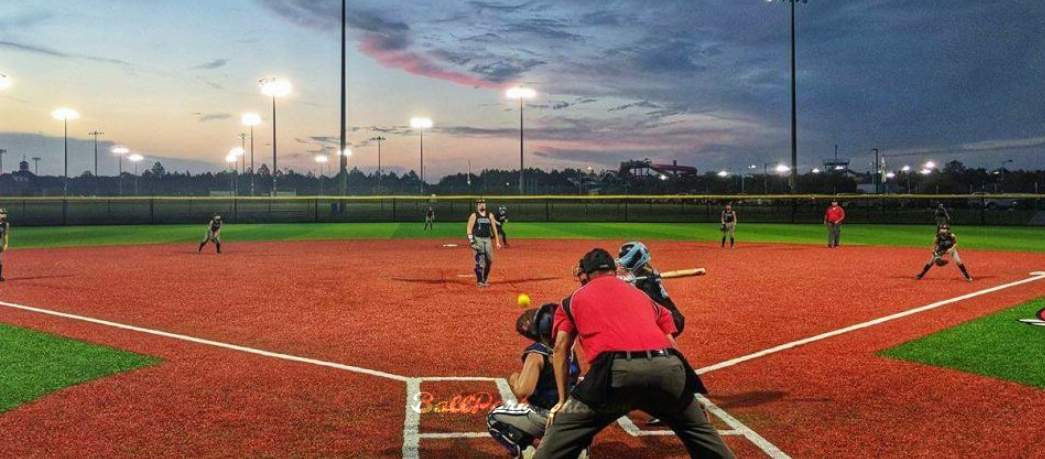
Optimizing Performance and Extending the Lifespan of Lighting Systems
Proper care and ongoing maintenance not only keep the lighting system functioning optimally but also extend its overall lifespan. Even with LED systems, which are known for their longevity and reliability, regular checkups are necessary to maximize performance. This includes ensuring that the lights remain aligned, cleaning the fixtures to remove dust or debris that can accumulate over time, and inspecting wiring or connections to prevent malfunctions.
Additionally, reviewing the lighting system after significant weather events, such as heavy storms or strong winds, helps catch potential issues early. Weather can sometimes shift fixtures, loosen poles, or cause other minor damage that, if left unchecked, might lead to bigger problems in the future. By incorporating seasonal inspections and making small adjustments, you can keep the lighting system working efficiently for years to come.
Another aspect of performance optimization involves the use of advanced lighting controls. Many modern LED systems come equipped with smart technology that allows for remote monitoring and adjustment. This can include the ability to dim lights during practices or low-intensity games, automatically adjust brightness levels based on outdoor conditions, or even schedule lighting to turn on and off at specific times. These controls not only help save energy but also ensure that the lighting system is always calibrated for optimal performance based on the needs of the game or event.
Environmental Considerations and Sustainability
Sustainability is an increasingly important factor for many community and recreational facilities. Opting for eco-friendly lighting solutions, such as energy-efficient LEDs or solar-powered lights, can significantly reduce the environmental impact of your field while also lowering operating costs.
LED systems, in particular, use far less energy than traditional lighting options, which helps reduce carbon emissions and lowers the facility’s overall energy footprint. Many LED lights are also recyclable, adding another layer of sustainability to their use.
For facilities located in sunny regions, solar-powered lighting systems present an additional opportunity for sustainability. These systems rely on renewable energy, which reduces dependence on traditional power sources and can cut down on electricity costs in the long run. Although solar-powered systems may require a higher initial investment, their environmental benefits and potential for long-term savings make them an attractive option for eco-conscious communities.
Aside from the lighting systems themselves, communities can also take steps to minimize the environmental impact of lighting by reducing light pollution. This can be achieved by choosing fixtures with precise optics that direct light only where it’s needed—on the playing field—without causing excess light spill into surrounding areas. Limiting light pollution not only helps conserve energy but also protects local wildlife and preserves the natural nighttime environment for neighboring residents.
Conclusion
Selecting the right lighting for a community or recreational baseball field is a multifaceted process that involves careful consideration of factors like field size, lighting technology, energy efficiency, and long-term maintenance. LED lighting stands out as the top choice for most recreational fields due to its combination of energy savings, durability, and superior light quality. Solar-powered lighting, while less common, offers a sustainable option for fields with abundant sunlight.

